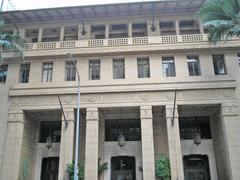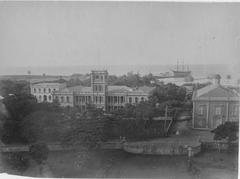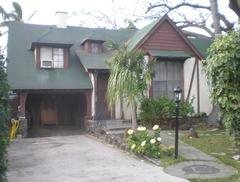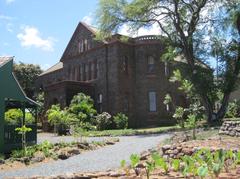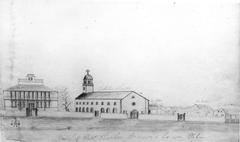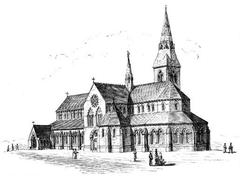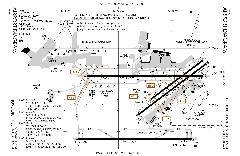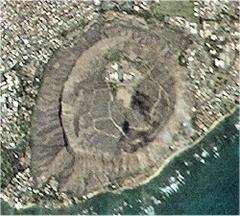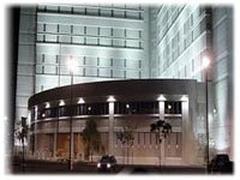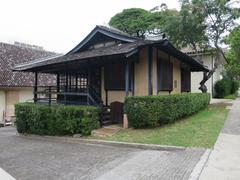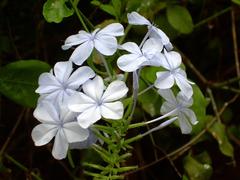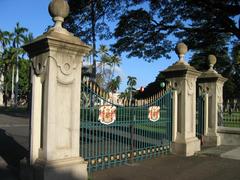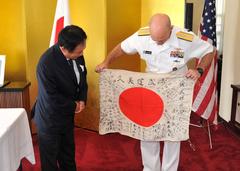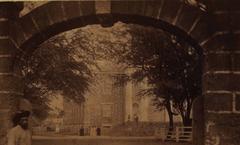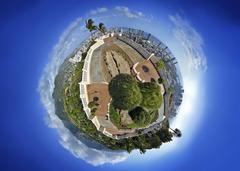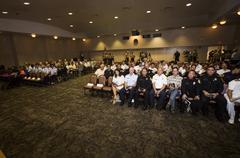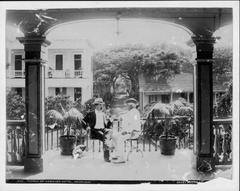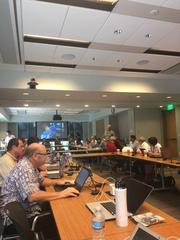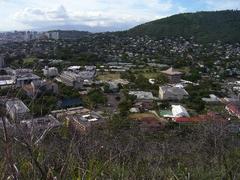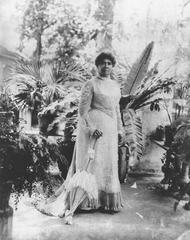
Complete Guide to Queen’s Medical Center Visiting Hours, Tickets, and Honolulu Historical Sites
Date: 04/07/2025
Introduction
Situated in Honolulu’s vibrant heart, The Queen’s Medical Center (QMC) is Hawai‘i’s premier healthcare institution and a landmark deeply woven into the state’s cultural and historical fabric. Established in 1859 by Queen Emma Kaleleonālani and King Kamehameha IV, QMC was a direct response to epidemics that severely affected Native Hawaiians. The founders’ vision was to create an institution providing compassionate, high-quality healthcare for all people of Hawai‘i—a mission that continues to guide QMC today (NCBI, APIAHiP).
This guide provides essential visitor information—such as visiting hours, accessibility, and tips—while placing QMC in the context of Honolulu’s history and its role in advancing healthcare and cultural preservation. You’ll also find guidance on neighboring historical sites like the Queen Emma Statue and Iolani Palace, ensuring a well-rounded visitor experience (Queen’s Health Systems, Star Advertiser).
Table of Contents
- Introduction
- The Founding Vision: Queen Emma and King Kamehameha IV
- Growth and Legacy
- Commitment to Native Hawaiian Health
- Modern Achievements and Recognition
- Visitor Information: Hours, Access, and Tips
- Nearby Cultural and Historical Attractions
- Queen Emma Statue Visitor Guide
- FAQ
- Conclusion and Visitor Summary
- Official Resources and Sources
The Founding Vision: Queen Emma and King Kamehameha IV
In 1859, Queen Emma and King Kamehameha IV established what would become The Queen’s Medical Center to address the devastating effects of foreign diseases on Native Hawaiians (NCBI). Queen Emma’s tireless fundraising and advocacy, paired with King Kamehameha IV’s legislative support, ensured the hospital opened its doors to all, regardless of ethnicity or status. Their commitment to equitable, compassionate care remains the hospital’s guiding principle.
Growth and Legacy
QMC began as a modest facility but rapidly became a cornerstone of the Honolulu community. Early on, staff included both Western-trained physicians and traditional Hawaiian healers, reflecting a commitment to culturally sensitive care. As epidemics and health crises continued—such as smallpox, leprosy, and influenza—QMC expanded its capacity and services, serving as a primary treatment and quarantine center (NCBI).
Through the years, QMC has grown into Hawai‘i’s largest private, non-profit hospital, with 575 beds and 9,500 employees, serving as the flagship of The Queen’s Health Systems and supporting a network of hospitals and clinics statewide (Queen’s Health Systems).
Commitment to Native Hawaiian Health
A distinctive hallmark of QMC is its Native Hawaiian Health Program, which focuses on:
- Clinical Outcomes: Specialized care for conditions disproportionately affecting Native Hawaiians.
- Healthcare Training: Scholarships and workforce programs to boost Native Hawaiian representation in health professions.
- Research: Addressing health disparities through targeted studies and innovation.
- Outreach: Community partnerships promoting preventive care and health education (AHA Case Study).
These initiatives are grounded in Hawaiian values—aloha (compassion), kuleana (responsibility), and pono (righteousness)—honoring the legacy of the founders.
Modern Achievements and Recognition
QMC is consistently recognized as Hawai‘i’s top hospital by U.S. News & World Report, excelling in specialties such as cancer, heart care, neuroscience, orthopedics, pediatrics, and women’s health (Queen’s Health Systems). Advanced facilities—including the expanded Uytengsu Family Emergency Department—meet the evolving needs of local and regional populations, supported by philanthropy and community engagement (Star Advertiser).
QMC also serves as a vital hub for medical research and education, partnering with academic institutions and supporting graduate medical education and clinical trials (QMC ORD).
Visitor Information: Hours, Access, and Tips
Visiting Hours:
General visiting hours are typically from 9:00 AM to 8:00 PM, with up to two visitors per patient at a time. Hours may vary by department; check the official website for current guidance, as COVID-19 protocols may affect access.
Admission and Tickets:
No admission fee or ticket is required to visit public areas. Guided tours are not routinely offered but can be arranged for educational or group visits by contacting QMC administration.
Accessibility:
The entire campus is wheelchair-accessible, with services available for visitors with hearing or visual impairments.
Parking and Transportation:
On-site parking is available with clearly marked visitor areas. The hospital is centrally located at 1301 Punchbowl Street and accessible by public transit.
Visiting Tips:
- Visit on weekdays during regular hours for a quieter experience.
- Explore public spaces featuring Hawaiian artwork and historical exhibits.
- Use downloadable maps and virtual tours from the QMC website for easier navigation.
Nearby Cultural and Historical Attractions
- Queen Emma Statue: Located near QMC, this monument honors the hospital’s founder and her legacy.
- Iolani Palace: The only royal palace on U.S. soil, offering guided tours and a glimpse into Hawaii’s monarchy.
- Hawaii State Capitol and Downtown Historic District: Explore government buildings, museums, and cultural landmarks within walking distance.
Queen Emma Statue Visitor Guide
Location: Downtown Honolulu, near QMC
Visiting Hours: Sunrise to sunset, daily
Admission: Free
The Queen Emma Statue stands as a tribute to one of Hawaii’s most beloved royals—an advocate for healthcare and education. No ticket is required to visit the statue. The site is wheelchair-accessible and features bilingual information plaques. Occasional guided tours and commemorative events are held, particularly during heritage months and on Queen Emma’s birthday.
Combine your visit with a walking tour of other nearby historic sites for a richer cultural experience. For virtual tours and images, visit the Honolulu Museum of Art’s virtual tour page (link placeholder).
Frequently Asked Questions (FAQ)
Q: What are The Queen’s Medical Center visiting hours?
A: Generally 9:00 AM to 8:00 PM daily, but hours may vary by department and are subject to change due to COVID-19 or other policies (Queen’s Health Systems).
Q: Do I need a ticket to visit QMC or the Queen Emma Statue?
A: No ticket or admission fee is required for either.
Q: Are tours available at QMC?
A: Not routinely, but educational or group tours can be arranged by contacting QMC administration.
Q: Is QMC accessible for visitors with disabilities?
A: Yes, the hospital and nearby monuments are wheelchair-accessible.
Q: What other historical sites are near QMC?
A: Iolani Palace, Hawaii State Capitol, and the Honolulu Historic District are all nearby.
Conclusion and Visitor Summary
The Queen’s Medical Center is more than a hospital—it is a living testament to Hawai‘i’s royal legacy, dedication to health equity, and cultural stewardship. Visitors can expect an accessible, educational, and respectful environment that weaves together historical exhibits, community engagement, and advanced medical care. The hospital’s proximity to sites like the Queen Emma Statue and Iolani Palace invites a deeper exploration of Honolulu’s vibrant heritage (Queen’s Health Systems, NCBI, Honolulu Monuments).
For updated information on visiting hours, special events, and campus navigation, download the Audiala app or visit the official QMC website. Embrace the spirit of aloha and mālama during your visit, and help perpetuate Queen Emma’s legacy of compassionate care.
Official Resources and Sources
- Visiting Queen’s Medical Center in Honolulu: History, Cultural Significance, and Visitor Information
- The Queen’s Medical Center: A Pillar of Healthcare in Hawaii
- Queen Emma Statue Visiting Hours, Tickets, and Visitor Information
- Visiting The Queen’s Medical Center: Hours, History, and Cultural Insights for Visitors
- U.S. News & World Report Hospital Rankings
- Hawaii News Now and Star Advertiser Reports on QMC Developments
- APIAHiP, Everyday Stories: The Queen’s Medical Center
- American Hospital Association Case Study on Native Hawaiian Health Program





